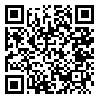Volume 18, Issue 69 (4-2009)
JGUMS 2009, 18(69): 68-76 |
Back to browse issues page
Download citation:
BibTeX | RIS | EndNote | Medlars | ProCite | Reference Manager | RefWorks
Send citation to:



BibTeX | RIS | EndNote | Medlars | ProCite | Reference Manager | RefWorks
Send citation to:
Dalili Z, Karimi nasab N, Dalili H, Rahmat Sadeghi D. Comparison of Radiographic Findings between Mandibular Asymmetric and Symmetric Patients. JGUMS 2009; 18 (69) :68-76
URL: http://journal.gums.ac.ir/article-1-270-en.html
URL: http://journal.gums.ac.ir/article-1-270-en.html
1- Guilan University of Medical Sciences
2- Guilan University of Medical Sciences, Faculty of Dentistry, Guilan University of Medical Sciences, Rasht, IRAN
3- Imam Khomeyni Hospital, Imam Khomeyni Hospital, Tehran, IRAN
2- Guilan University of Medical Sciences, Faculty of Dentistry, Guilan University of Medical Sciences, Rasht, IRAN
3- Imam Khomeyni Hospital, Imam Khomeyni Hospital, Tehran, IRAN
Abstract: (8375 Views)
Abstract Introduction: By considering the extensive dimensions of asymmetry, it seems that the evaluation in a single radiographic view is not adequate and it is better to evaluate it through different aspects. Objective: To compare the radiographic findings of patients with mandibular asymmetry and normal subjects, and to define the asymmetry index in this group of patients. Materials and Methods: In this descriptive case-control study, Posterior- Anterior PA cephalometric, panoramic and condylar tomographic views of twenty patients, including 10 asymmetric patients with the mean age of 17.8 years (6 female, 4 male) and 10 symmetric subjects with the mean age of 17.6 years (6 female, 4 male) were evaluated. The control and experimental groups were matched by Cervical Vertebra Maturation Stage index and nearly chronological age. In PA cephalometry radiographs, 8 indices were evaluated in two categories of horizontal indices and vertical indices. After measuring condylar and ramal heighs in panoramic views, condylar and ramal indices were determined. In tomograms three images comprising of posterior, middle and Anterior were obtained from right and left sides. The average of maximum medio lateral dimension of condyle was calculated as tomographic index. Paired sample test analysis using SPSS with %95 confidence interval is applied for analysis. Results: Mean tomographic indices in control and cases groups were reported 2.91 and 4.98 respectively. Condylar and ramus indices in control group were 0.07 and 0.01, and in case group, were 0.04 and 0.01. There is no significant difference between experimental and control groups on all of the mentioned radiographic indices. Conclusion: Tomography, PA cephalometry, panoramic and tomography views are helpful in the diagnosis of asymmetry. But they don’t introduce a definitive borderline in the form of asymmetry indices.
Review Paper: Research |
Subject:
Special
Received: 2013/11/24 | Accepted: 2013/11/24 | Published: 2013/11/24
Received: 2013/11/24 | Accepted: 2013/11/24 | Published: 2013/11/24
| Rights and permissions | |
 |
This work is licensed under a Creative Commons Attribution-NonCommercial 4.0 International License. |






